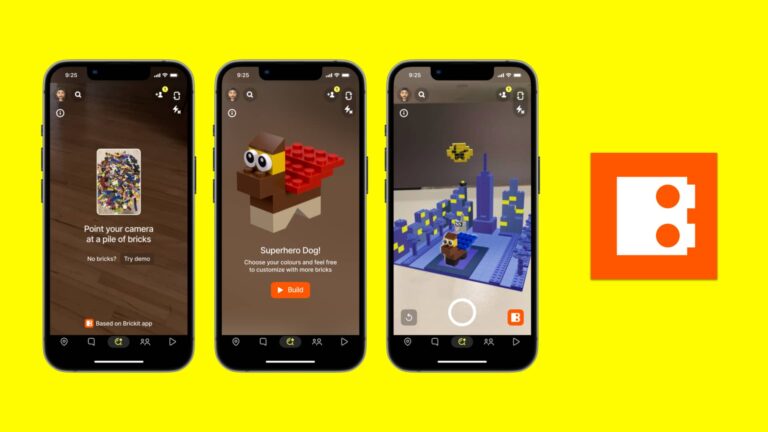
One of our favorite under-the-radar AR apps since we first wrote about it two years ago is Brickit. Though it doesn’t fit into the traditional bucket of AR – a la lenses and product try-ons – it elegantly brings digital augmentation to physical objects in ways that feel like magic.
For those unfamiliar, Brickit applies computer vision to make sense of random assortments of Lego blocks. Then it suggests what you can build with them, leading to moments of discovery and serendipity. These are qualities inherent in Legos themselves, elevated by AR.
The way this works is that you launch the app and point your phone at a pile of Lego blocks. The pile can be a random assortment that’s simply dumped out on a flat surface. The app then performs its machine-learning magic in a matter of seconds and suggests what you can build.
Suggested projects even come with directional indicators for where in the pile the right pieces sit. It reminds us of Snap Lens’ integration with Allrecipes to suggest meals based on the items in your fridge. Altogether it has a combination of utility and the magic that draws us to AR.
Express Lane
Speaking of Snap, Brickit recently reemerged on our radar screen when it launched a Snap Lens. Known as Brickit Express, it breathes new life into the experience, not to mention a new distribution channel to expose and amplify it to new audiences (more on that in a bit).
Developed in partnership with Qreal, Brickit Express is like the original app but taps into SnapML – the Lens Studio feature that lets developers bring their own machine-learning models. It also utilizes Snap’s Lens Cloud to deliver 3D models and step-by-step directions.
“The Brickit Express Lens is the result of close collaboration between companies and combining diverse skill sets,” Qreal Managing Director (and AR insider contributing writer) Mike Cadoux said. “The talented team at Brickit brought their powerful ML model and Lens concept.”
We got to test drive Brickit Express at AWE USA, and all of these capabilities are well integrated. The computer vision and machine learning go to work quickly to scan Lego pieces arrayed across a table. Options are then offered for new creations, including easy-to-follow instructions.
While using it, it struck us that the outcome isn’t just fun and serendipity but collaborative moments for family activities. For example, it can teach kids about computer vision and machine learning in fun ways, while maybe even getting them to clean up all their far-flung Lego pieces.
The Platform Landscape
Back to the point about distribution, one key lesson here is utilizing popular platforms like Snapchat to amplify AR experiences. As we’ve examined, developers are faced with several options for AR creation and distribution, given the fragmented state of the platform landscape.
The benefits of launching one’s own app are to tap into native libraries and robust platforms like ARKit. This can mean more control among other things. But utilizing a platform like Snap’s Lens Studio can tap into established distribution channels and built-in AR-forward audiences.
Brickit has done both, with a go-it-alone approach that’s augmented with a Snapchat lens. In fairness to Snap, it should also be noted that Lens Studio capabilities have greatly expanded in the past few years beyond simple lenses. This was demonstrated at the recent Lensathon.
And that deeper functionality is required for apps like Brickit that are more utilitarian than face filters (which still have value). This is where Snap AR is moving, and it knows the evolutionary path of any technology is to become a utility. Brickit Express is a signpost on that path.
“Brickit Express [makes] it even faster and easier for 750 million monthly Snapchatters to discover new ways to create with bricks,” said Brickit founder & CEO Leo Alexandrov. “We’re able to build the useful and playful Brickit experience right into the Snapchat Camera.”






